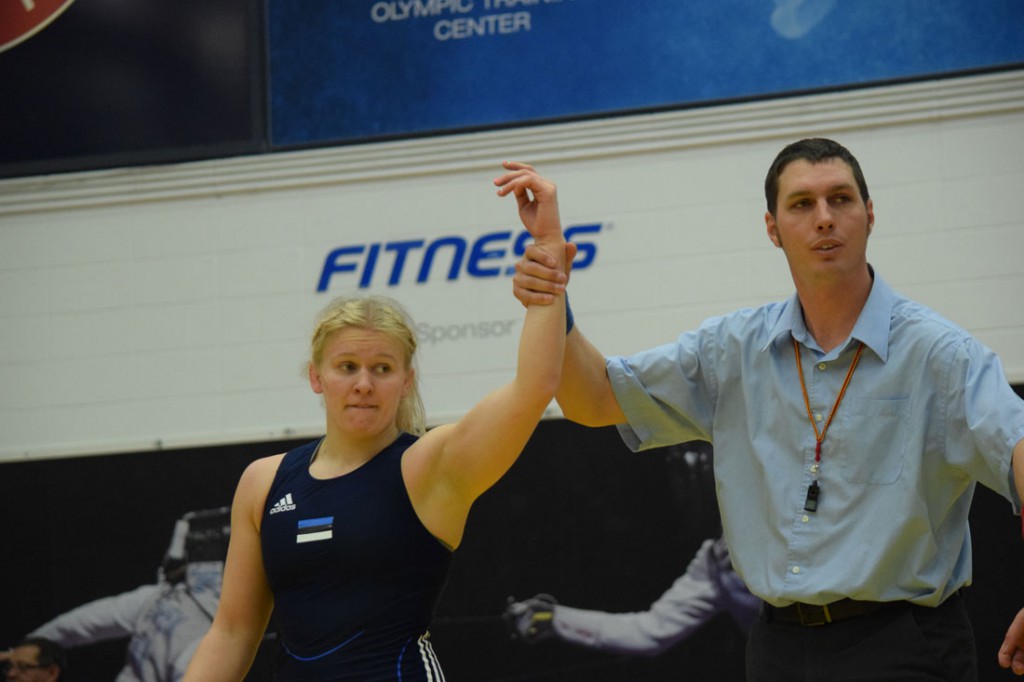By Tolly Taylor and Aishwarya Kumar Lakshminarayanapuram
Imagine inviting someone to your house for the first time, and she beats you up. That’s what happened in January when Estonian wrestler Mae Epp bludgeoned her U.S. opponents with two technical falls and a pin at the Dave Schultz Memorial International tournament in Colorado Springs.
The world No.2 at 75 kilograms (165 pounds) hugged her opponents after accepting her gold medal, but the U.S. wrestlers at the Olympic Training Center now knew where they stood.
Epp stayed at the OTC because of the Olympic Solidarity Commission, which uses its 2013-16 budget of $438 million to send athletes from 200 countries to train worldwide. The funds, largely from TV rights, are up from $244 million in 2008.

“Our combat sports — boxing, fencing, wrestling specifically– if you’re just wrestling U.S. athletes, you only get really good at the technique that is done within the states,” said Aron McGuire, director of the OTC at Colorado Springs. “And so what we’ll do is we’ll invite athletes from other countries to come and train with our U.S. athletes [for up to a year].”
The 35-year-old commission works with the 200 National Olympic Committees to give athletes scholarships, grants and the chance to train at top centers around the world.
Epp’s Finnish and Latvian teammates were visiting the OTC for the second time in the last two years.
Starting at smaller competitions, like the Dave Schultz tournament, prepares the wrestlers for bigger competitions later in the season, said coach Ahto Raska. Training at 6,035 feet allows the athletes to produce more red blood cells, which is believed to help in endurance sports.
European wrestlers traditionally circle their opponents and rely on throws and fast hand movements. But they appreciate competing against the Americans, who are known for their calculated but sudden attacks, said Anastasia Lobsinger, the U.S. national team member who was left with a bloodied lip and a penny-sized welt on her forehead after losing to Epp in the second round.

“[In the United States] if your opponent is lying on your stomach on the ground… they have a lot of different techniques and they drill it over time,” Epp said. “[They like] standing up and wrestling from there.”
Lobsinger competed in the same weight class as Epp, but she was returning from a shoulder dislocation that kept her out of wrestling for a year. For her, the tournament was about rediscovering her form.
“I knew it was going to be a tough match, because she is really good,” Lobsinger said. “She is also my training partner, so I just really wanted to work what I knew, and just see where I am at as far as competing with the best.”
As part of the Solidarity Commission’s program, the wrestlers also spent a week in Iowa for a combine in January.
“It was really hard to wake up at 6 and train from 7 to 11,” said Latvia’s Anastasija Grigorjeva, the world’s No.5 ranked wrestler at 63 kilos. “It was very tiring, but we had an awesome experience.”
Grigorjeva won the tournament in her weight class, defeating USA’s Jennifer Page 12-5 in a match that looked deceptively close. Grigorjeva established hand control early on, tripping and pushing Page to the mat.
Grigorjeva and her team then left the wrestling mats in favor of cafeteria booths, where they celebrated their three-week stint at the OTC.
The cost of each meal: 50 cents per athlete, thanks to the established grants for approved international athletes.
McGuire explained that the U.S. OTC bills countries a token $125 for every athlete they send to Colorado Springs for two- to three-week periods. That, along with the commission funding, buys them housing, transportation, meals and access to the training venues, he said.
Like international students who tell their governments they want to study at U.S. colleges, the athletes let their national governing bodies know they want to train at a particular training center.
“We look to see if there is space available, and we work with the National Governing Body and then they’ll on their own fly over here, we assign rooms, and then they train,” McGuire said. “And so sometimes they’ll be training independently and sometimes they’ll be training with our U.S. athletes.”
For Epp, Grigorjeva and their team, the goal is to train with U.S. wrestlers. They practice enough independently when they are home.
“We go home tomorrow and we go to Russia, we go to Europe, we go, that’s all we do,” Raska said. “We don’t often come to the U.S.”


